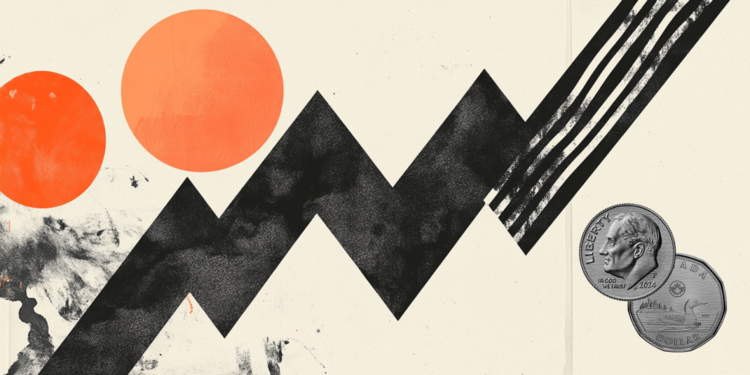- USD/CAD attracts some buyers amid a combination of factors, though it lacks bullish conviction.
- Sliding Crude Oil prices undermine the Loonie and support the major amid a modest USD uptick.
- Divergent Fed-BoC policy expectations could act as a headwind for the pair and warrant caution.
The USD/CAD pair trades with a positive bias for the second straight day on Monday and climbs to the 1.3920-1.3925 area during the Asian session. The uptick is sponsored by a combination of factors, though the lack of follow-through buying warrants caution for aggressive bullish traders.
Crude Oil prices kick off the new week on a weaker note in reaction to the OPEC+ surprise decision on Saturday to raise output by 548,000 barrels per day in August. This raises concerns about oversupply and weighs on the black liquid, which, in turn, is seen undermining the commodity-linked Loonie. The US Dollar (USD), on the other hand, attracts some safe-haven flow on the back of fresh Israeli strikes on Yemen in almost a month and turns out to be another factor acting as a tailwind for the USD/CAD pair.
Any meaningful USD appreciation, however, seems elusive in the wake of worries that US President Donald Trump’s massive tax-cut and spending bill would worsen America’s long-term debt problems. This, along with bets that the Federal Reserve (Fed) will resume its rate-cutting cycle in the near future, should keep a lid on the USD. Apart from this, diminishing odds for more interest rate cuts by the Bank of Canada (BoC) should benefit the Canadian Dollar (CAD) and contribute to capping the USD/CAD pair.
Moving ahead, there isn’t any relevant market-moving economic data due for release on Monday, either from the US or Canada, leaving spot prices at the mercy of the USD and Crude Oil price dynamics. Meanwhile, the market focus will remain glued to the release of FOMC meeting minutes on Wednesday. Investors will look for fresh cues about the Fed’s rate-cut path, which, in turn, will play a key role in influencing the USD demand and providing some meaningful impetus to the USD/CAD pair.
Canadian Dollar FAQs
The key factors driving the Canadian Dollar (CAD) are the level of interest rates set by the Bank of Canada (BoC), the price of Oil, Canada’s largest export, the health of its economy, inflation and the Trade Balance, which is the difference between the value of Canada’s exports versus its imports. Other factors include market sentiment – whether investors are taking on more risky assets (risk-on) or seeking safe-havens (risk-off) – with risk-on being CAD-positive. As its largest trading partner, the health of the US economy is also a key factor influencing the Canadian Dollar.
The Bank of Canada (BoC) has a significant influence on the Canadian Dollar by setting the level of interest rates that banks can lend to one another. This influences the level of interest rates for everyone. The main goal of the BoC is to maintain inflation at 1-3% by adjusting interest rates up or down. Relatively higher interest rates tend to be positive for the CAD. The Bank of Canada can also use quantitative easing and tightening to influence credit conditions, with the former CAD-negative and the latter CAD-positive.
The price of Oil is a key factor impacting the value of the Canadian Dollar. Petroleum is Canada’s biggest export, so Oil price tends to have an immediate impact on the CAD value. Generally, if Oil price rises CAD also goes up, as aggregate demand for the currency increases. The opposite is the case if the price of Oil falls. Higher Oil prices also tend to result in a greater likelihood of a positive Trade Balance, which is also supportive of the CAD.
While inflation had always traditionally been thought of as a negative factor for a currency since it lowers the value of money, the opposite has actually been the case in modern times with the relaxation of cross-border capital controls. Higher inflation tends to lead central banks to put up interest rates which attracts more capital inflows from global investors seeking a lucrative place to keep their money. This increases demand for the local currency, which in Canada’s case is the Canadian Dollar.
Macroeconomic data releases gauge the health of the economy and can have an impact on the Canadian Dollar. Indicators such as GDP, Manufacturing and Services PMIs, employment, and consumer sentiment surveys can all influence the direction of the CAD. A strong economy is good for the Canadian Dollar. Not only does it attract more foreign investment but it may encourage the Bank of Canada to put up interest rates, leading to a stronger currency. If economic data is weak, however, the CAD is likely to fall.

